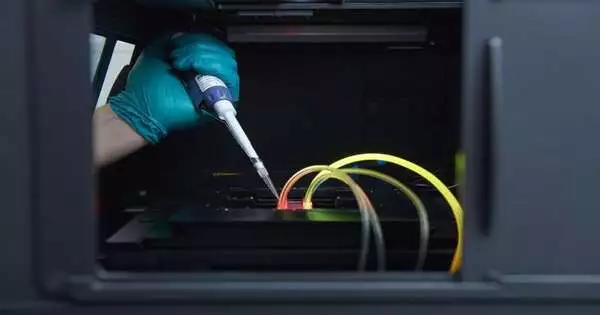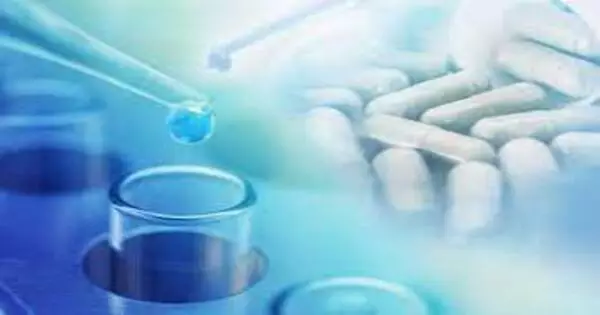A new tool reduces the time it takes to manufacture vaccines and other pharmaceutical goods by over a million times while lowering expenses.
Industry will frequently examine thousands of similar candidate compounds in search of medicinal substances such as new vaccines. This can be done on the nanoscale with minimal material and energy expenditure thanks to a unique approach. The findings were published in Nature Chemistry.
In a pinhead-sized area, more than 40,000 molecules may be generated and examined. The approach, which was created in Denmark through a highly interdisciplinary research effort, promises to save pharmaceutical businesses a significant amount of material, energy, and money.
As nano-containers, the approach employs soap-like bubbles. Multiple chemicals can be combined within containers using DNA nanotechnology.
“The volumes are so small that testing material comparable to the full mass of Mount Everest may be compared to using one liter of water and one kilogram of material instead of the total volume of water in all oceans. This is a record-breaking effort in material, manpower, and energy savings. ” The team’s leader is Nikos Hatzakis, an Associate Professor at the University of Copenhagen’s Department of Chemistry.
Saving endless amounts of time, energy, and personnel would be critically important for any synthesis creation and evaluation of medications, says Mette G. Malle, Ph.D. student and postdoc researcher at Harvard University in the United States.
“The volumes are so small that the use of material can be compared to using one liter of water and one kilogram of material instead of the entire volumes of water in all oceans to test material corresponding to the entire mass of Mount Everest. This is an unprecedented save in effort, material, manpower, and energy,”
Nikos Hatzakis, Associate Professor at the Department of Chemistry, University of Copenhagen.
In just seven minutes, you’ll have your results.
The Hatzakis Group at the University of Copenhagen collaborated on the project with Associate Professor Stefan Vogel from the University of Southern Denmark. A Villum Foundation Center of Excellence grant helped fund the endeavor. The final solution is known as SPARCLD, which stands for “single particle combinatorial lipidic nanocontainer fusion based on DNA mediated fusion.”
Synthetic biochemistry, nanotechnology, DNA synthesis, combinational chemistry, and even machine learning, an AI (artificial intelligence) subject, are all part of the breakthrough.
“No single element in our system is absolutely unique,” says Nikos Hatzakis, “but they have never been blended so flawlessly.”

The approach yields results in as little as seven minutes.
We’ve got something that’s pretty close to a real-time readout. This means that the arrangement may be continuously adjusted based on the readings, which adds a lot of value. We anticipate that this will be a critical factor in determining whether or not industry will adopt the solution. ” Mette G. Malle agrees.
I had to keep everything under wraps.
Although the project’s individual researchers have multiple business relationships, they have no idea which companies could be interested in implementing the new high-throughput technology.
“We had to keep everything under wraps because we didn’t want anyone to publish anything comparable before us. As a result, we were unable to speak with industry or other researchers about the method’s potential applications, “Nikos Hatzakis agrees.

Nonetheless, he can think of a few applications:
Industry and academic groups interested in the synthesis of lengthy molecules like polymers are likely to be among the first to adopt the technology. The same can be said for ligands that are important in pharmaceutical development. The method’s special attractiveness is that it can be further integrated, allowing for the immediate insertion of a relevant application. “
RNA strings for the essential biotech tool CRISPR, or an alternative for screening, detecting, and manufacturing RNA for future pandemic vaccines, are possible examples.
“Our approach allows us to use SPARCLD in conjunction with a post-combinatorial readout for protein-ligand reactions, such as those used in CRISPR. Because we wanted to share our methods first, we haven’t been able to fix this yet.





